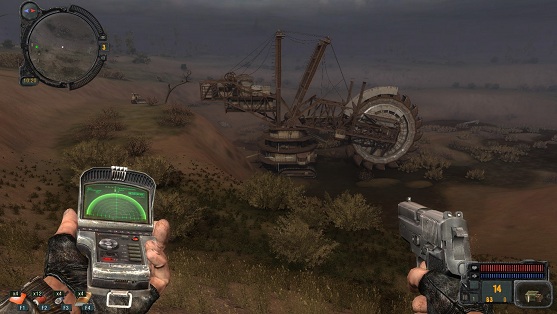
Despite using a ridiculously contrived acronym for a title and being notoriously buggy, the original STALKER: Shadow of Chernobyl was one of my favorite games of 2007. As I recall it was a very polemical game. One half of reviewers slammed the game for its technical problems, lack of polish and a story that was difficult to make sense of, especially due to the poor job done with translating the content from Russian to English. The other half praised it for its incredible atmosphere, sense of immersion and even claimed that the poor translation job added a distinctive character to the game. It didn’t help either the game was originally supposed to be released in 2003 and many people had given it up as being vaporware.
I was firmly in the latter camp of course and went around the net loudly defending the game on forums and blogs. Yes, the game was hard but there was something simultaneously nostalgic and refreshing about a modern game that dared to kill the player within minutes of entering the game world just like in the old days. The graphics were impressive but what really stood out was how immersive the world felt.
There was an acute sense of being there in the zone, of the solitary alienation of needing to survive in an intensely hostile environment. You could could spend what felt like days trudging through the devastated landscape, perking up whenever you heard a twig snap or the crackling of a bush, or snapping up the scope of your rifle to look at something moving on the horizon. On rare occasions, you might run into human company, other stalkers just like you, huddling around a fire at night and telling jokes or stories to each other. Occasionally, one might even pull out a guitar and strum a few chords.
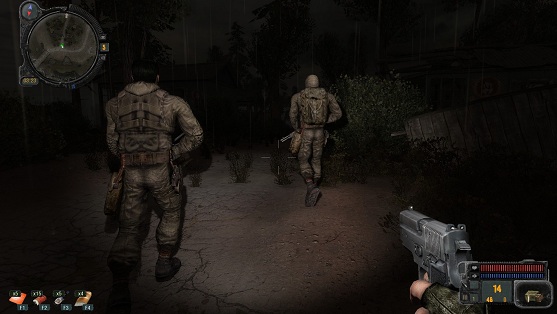
The combat was good too. It was something of a wet dream for gun nuts with its wide variety of both NATO and Soviet weapons, all using a realistic ballistics model that took account of bullet drop and the different penetrative power of different calibers and types of ammunition. Combined with the fact that you can only carry a limited load on your person and so have limited ammunition, plus the fact that your weapons degrade with use and must be periodically repaired, it made for a fantastically tense survival horror game.
I skipped the next game in the series, Clear Sky, which was a prequel because of poor reviews and reports that the touted faction wars system it introduced doesn’t really work. But Call of Pripyat, which covers events directly following the first game, received uniformly good reviews and ditches the faction wars stuff, so here I am again, back in the zone as a stalker.
For the uninitiated, the STALKER games are set in a near-future alternate reality in which the nuclear reactor at Chernobyl continues to be used for secret experiments after the original disaster of 1986. The experiments result in a second nuclear incident that also somehow changes reality in the zone around the reactor. The native fauna and even some humans turn into misshapen mutants and set amidst patches of deadly radiation are anomalies in which the rules of reality are drastically altered, killing anyone who wanders into them.
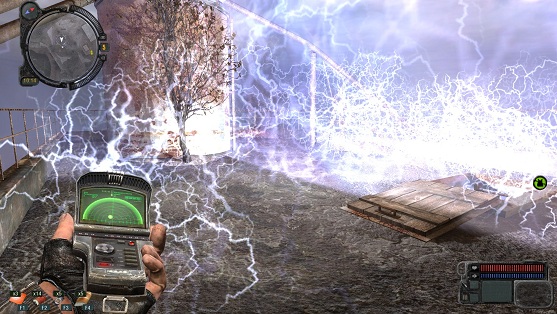
At the same time, strange artifacts spawn at these anomalies which have interesting and unique properties that are useful for science and industry. This prompts adventurous individuals to defy the government ban on all travel into the zone to risk their lives to obtain these valuable objects. Such individuals become known as stalkers and you play one such in the first game, with the objective of exploring the zone and trying to penetrate the dangerous core of the zone.
In Call of Pripyat, the core is now accessible and so the Ukrainian government organizes a large-scale helicopter-borne invasion force into the core to try to gain control. However, the operation fails as the helicopters fall out of the sky for no discernible reason. The player then controls a military officer who is sent into the zone on foot and disguised as an ordinary stalker to try to discover why the operation failed and to learn the fate of the soldiers. This means the game is less of a sandbox than the original. On the other hand, GSC Game World seems to have finally delivered a polished and mostly bug-free game, making this the most pleasant and newbie friendly installment of the series.
In many ways, the mechanics in this sequel represent what should have been in the previous games. You now need detectors to search for artifacts and anomalies no longer spawn more or less randomly across the map but are instead restricted to specific zones that are marked as being dangerous on your map. There are now emission blowouts which happen periodically. The game gives you a warning two minutes before it happens and you need to reach one of the pre-designated refuges in time or be killed. The blowouts also cause artifacts to respawn so you never run out of things to farm when you need money.
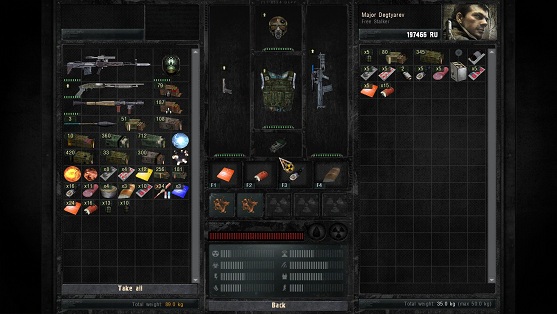
As in Clear Sky, you can bring equipment to technicians to not only repair but also upgrade them. There are different upgrade paths for each item and selecting one upgrade on a tier will lock you out of the alternative. Initially, upgrade options are limited until you can unlock the higher tiers by seeking out tools and giving them to the technicians. Other than artifact gathering, there are now no more random quests with all the bugs associated with them, and each one is handcrafted and consequently of much better quality. Stashes are no longer random as well and never respawn. Instead, the items in each stash are available to be discovered at any time. Successfully completing quests will still sometimes award you with the locations of stashes but if you ran into them before in the course of your explorations, the items are still gone.
Other improvements include refinements to the user interface, especially the radar map, which is now much easier to use, and enemy AI. Mutants now fight much more intelligently, being capable of circling around you to attack instead of rushing headlong into your shotgun all the time. The most impressive part is watching the NPCs go about their daily routines. They will leave in the stalker hubs in the morning, go around on patrol or even search for anomalies themselves, take shelter when an emission hits and come back to the hubs for R&R in the evening. Since they can fight mutants on their own and even die to anomalies, you will occasionally run into the corpses of dead stalkers while out in the wild. Sometimes one might even have a valuable artifact on his body!
All of these changes result in a much more polished game, making it a must for any Stalker fan and making it the easiest way for a newbie to get into the series. The atmospherics are as good as ever and the updated graphics engine looks suitably gorgeous. It’s not quite top of the line technology any longer but it works fine enough. Your character also starts the game with a halfway decent gun now, making the early game much more survivable. Gone are the days when you were given nothing but a rusted pistol and told to engage the enemy with it.
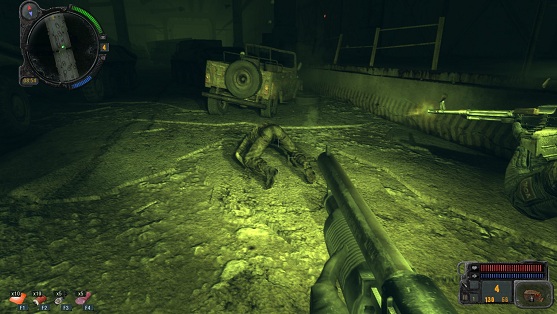
One downside is that the game world feels smaller. There are only three main zones in the game, and while each of them is larger than any of the zones in the original game, the total acreage is still appreciably smaller. Another is that if anything, the game is now too easy, especially for those who played the first one. Veterans might want to ramp up the difficulty level to compensate. The power curve this time around is a bit off so you can obtain fairly powerful guns and armor quite early in the game. Money is also easy to come by once you get the hang of hunting for artifacts. You’ll quickly come to a point where you can buy anything the traders can sell and still have plenty of cash sitting around uselessly.
Another consideration is that while the main story makes much more sense this time around as you simply need to find out what happened to the helicopters, find the survivors and get them out, it lacks the grandeur and mystery of the first game. The exclusion zone here feels like an adversary to be fought, not a whole new world to explore. The main story will take you along some very cool moments, including a frantic underground journey with a team of fellow stalkers, but the first game still has the more memorable set pieces.
Overall, this is an excellent sequel and a worthy game in its own right. While it lacks some of the magic and freshness of the original, that is something that all sequels must deal with. Fortunately, the more polished mechanics and the bug-free experience helps tilt the balance in this game’s favor. For fans of the original story, it also provides closure to the disjointed events at the end of the first game and lets you know the final fate of the various characters, making it not to be missed.
Leave a Reply